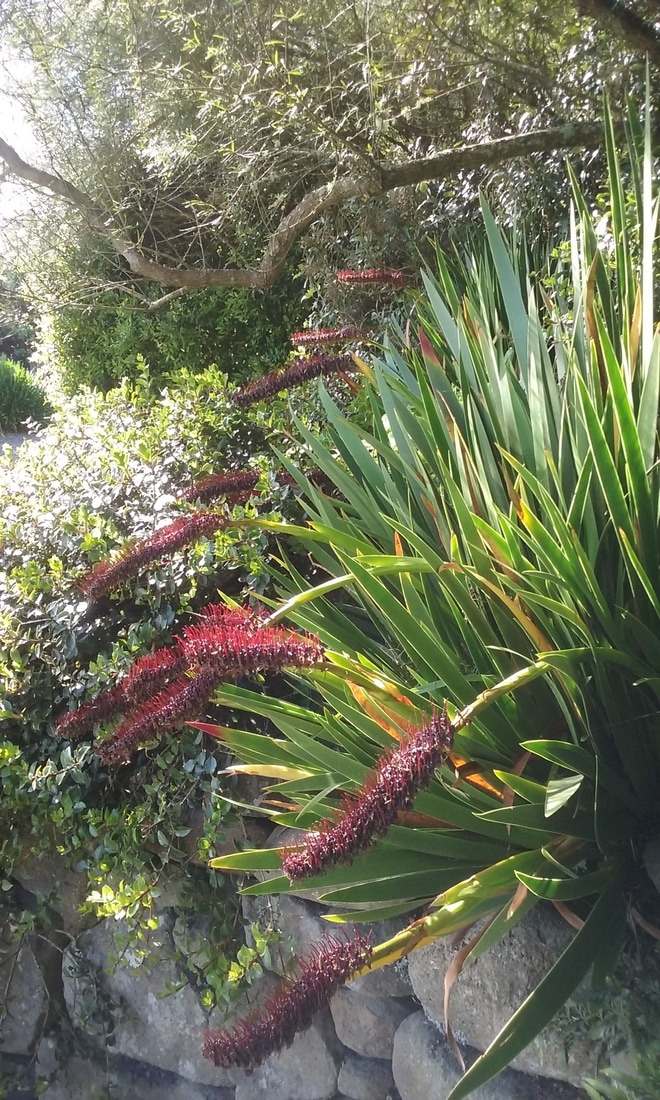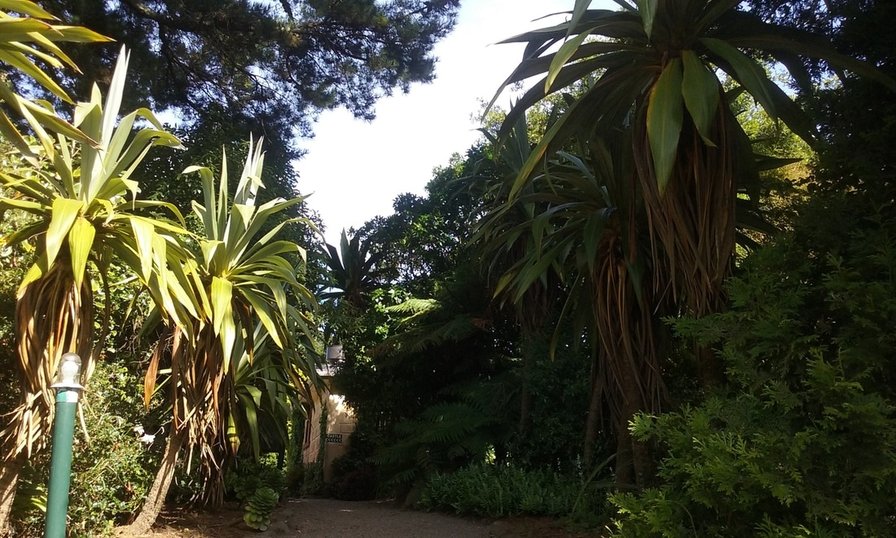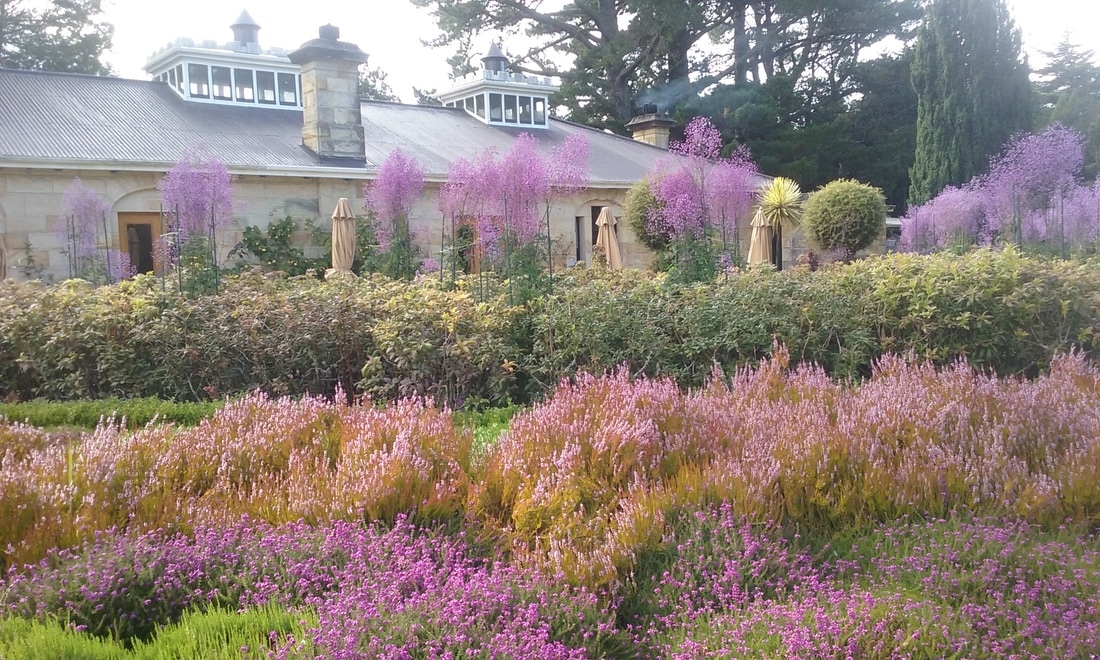Cordyline indivisa - Mountain cabbage Tree AvenueI was lucky enough to be invited to attend the 50 Year Celebration of the Barker Family at Larnach Castle in early March, and these photos are just a few of the glorious views of this unique and amazing garden. Sitting where it does high up on the Otago Peninsula overlooking the harbour, this garden has a micro-climate all of its own. Something which the owner of the Castle and garden, Margaret Barker, understands very well. Somewhere between an alpine and coastal situation, this garden is often engulfed in cold swirling damp mists, rain, wind, and even snow in winter, yet frosts are rare. And sunshine, while not rare is far from plentiful, and not too hot, so the climate could be described as cool humid temperate. Margaret has learned to adapt the garden to the climate. She has long ago given up trying to grow roses, but she makes the most of different microclimates throughout the property where she can grow not only the lushest tree ferns, including frost tender vareties such as the huge black Mamaku 'Cyathea medullaris', which doesn't grow easily in Christchurch's spiky climate, but also Pohutukawa 'Metrosideros excelsa'. There are several varieties of these growing on a warm north facing slope just above the warmer north coast of the Peninsula. These include a cream flowered variety called Metrosideros bartlettii - sometimes called the White Xmas Tree. In a different area of the garden with a cooler damper micro-climate on a high south-east facing slope there is an avenue of lush Mountain Cabbage Trees 'Cordyline indivisa' , which, as the name suggests, is at home in alpine situations (see image above). We might be able to grow lots of pretty roses and lavender on the hot dry Canterbury plains, but not these lush mountain beauties. I have tried in a cool damp south facing situation, but the nor'westers got them in the end. South Seas Garden Back at the warm north facing coastal slope, above the Pohutukawa grove, is the north facing South Seas Garden - the opposite end of the scale from the cool south facing Cordyline indivisa avenue. Up on this warm slope where large rocks have been thoughtfully placed to shelter and retain the suns heat, all the plants in this garden are indigenous to the southern hemisphere. Pictured here from South America to South Africa, Gazanias, Aloe polychroma, and Agaves grow happily amongst the carpeting bidibidi Acena purpurea native to New Zealand. Not pictured is the wonderful Nikau Walk. These are the hardiest of the Nikau Palm species and are endemic to the Chatham Islands - Rhopalostylis sapida 'Chathamica'. They are suited to this cool coastal situation withstanding cold harsh winds and even frosts up to 3 degrees. poor knights Lily To see the Poor Knights Lily - Xeronema callistemon growing in such a southerly situation is a treat indeed. And to see it in flower and looking so fulsome is remarkable considering it usually only grows in frost free sunny areas in northern areas of New Zealand and off shore islands. Yet here it is looking as happy as can be, as far south as the Otago Peninsula in the South Seas Garden at Larnach Castle. But perhaps the free draining north facing slopes of the Otago Peninsula in a sheltered position which is frost free, is not such an impossibility. It takes a plantswoman of Margaret Barker's calibre to understand exactly which position it would thrive in. cornus controversa variegataThere is a beautiful woodland walk which links the carpark near the entrance of Larnach Castle to the castle and surrounding gardens. A group of elegant tiered trees with light coloured foliage entice you to the beginning of the walk. Often called the Wedding Cake Tree - Cornus controversa 'Variegata', this particular species originates in Asia and is a taller more elegant form than the North American Cornus.
|
Details
Archives
July 2023
Categories |



 RSS Feed
RSS Feed
